-
About
- About Listly
- Community & Support
- Howto
- Chrome Extension
- Bookmarklet
- WordPress Plugin
- Listly Premium
- Privacy
- Terms
- DMCA Copyright
- © 2010-2025 Boomy Labs

 Hillary Bishop
Hillary Bishop
Listly by Hillary Bishop
Here are some of the best resources that I have found related to the ethical use of information. From avoiding plagiarism to decoding fake news, these resources will maintain your status as a good digital citizen. There's so much info out there...let's use it...but use it ethically! I found so many great resources that I had to make this list a "Top 11". Target grades: 6-8.

This game from Google is so fun and entertaining you may forget you are learning to be a good digital citizen. Interland is an action packed adventure of an online game that allows for the key lessons of digital citizenship and internet safety into practice through a gaming experience. As Google says, "Play your way to being Internet Awesome". There are 4 different games in 4 lands - "Share with Care", "Don't Fall for Fake", "Secure Your Secrets", "It's Cool to be Kind", and "When in Doubt, Talk it Out". This resource contains important lessons about being safe online.
WHAT: Digital citizenship game
WHY: Learn key lessons of digital citizenship
HOW: Play the game and have fun!!!

Ok, so you don't intentionally copy and paste content and pass it off as your own, right? However, you may accidentally take an idea or something from a source and forget to cite it. It is important to make sure your work is your own. This is where this helpful tool from Grammerly comes in. Instant plagiarism check for essays and documents. Detect plagiarism, fix grammar errors, and improve your vocabulary in seconds. You can copy and paste your own writing into the tool and automatically check for plagiarism.
WHAT: Plagiarism detection tool
WHY: Self-check to make sure you have not unintentionally plagiarized
HOW: Copy and paste your content into the tool

Ethical Use Of Information - What Does This Mean To You? by S. Hill is an interactive newsletter that gives an excellent overview of what plagiarism is and how to avoid it. Ms. Hill's presentation begins with a definition of plagiarism and guides you through the ethical use of information. As she states, "...just because it is there on the internet doesn't mean it's yours for the taking...". This presentation is helpful by showing the viewer various impacts of the ethical use of information.
WHAT: Interactive Newsletter
WHY: Learn about plagiarism and how to avoid it
HOW: Read news letter and click on links
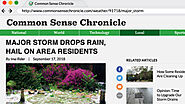
This short video from Common Sense Media teaches you how to read news online. It is important to know how to decipher the information you gather online. Just because you read it online doesn't make it true! This video teaches the difference between fact and opinion reading and informs viewer about different ad links, click bait links, and article links.
WHAT: Video about reading news online
WHY: To help you access real news online
HOW: Watch the video for helpful tips

This video explains some of the content available to you on the web in terms of using the information responsibly. We browse through and create mash-ups and mixes all the time. It is important to cite the source of information.
WHAT: Slideshow-like video about using info responsibly
WHY: Learn details of giving credit and citing
HOW: Watch tutorial and use the skills in your next project or writing
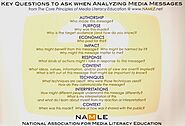
This infographic poses some key questions rooted in the core principles of media literacy education. You can use these ideas to be a better user of information and to help you develop and apply critical thinking skills to information you find on the internet. The Twitter link will also take you to other media literacy education graphics and allow you to browse the ideas contained there.
WHAT: Infographic with key principles of media literacy
WHY: To help analyze media messages you read
HOW: Ask yourself the key questions related to any media message you need to break down
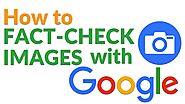
This video provides a demo of how Google's reverse image search tool can be used to fact check and research images. Have you ever wondered about the source or history behind certain pictures? Have you ever wondered if what you are looking at is true? You should! Unfortunately, there are altered and fake images on the internet. This video helps you learn a quick and fun way to verify, research, and learn more about any image you find on the web.
WHAT: Video tutorial on verifying images with Google
WHY: Learn how to find more information on almost any image
HOW: Watch tutorial and try out an image search

Targeted to parents, but an awesome read for students, this blog is contains great questions to ask yourself when deciding if your news source is accurate. Clickbait, hyper-partisan opinion, and completely false information are running wild across the internet. Read this advice from Common Sense Media editors to help you wade through all the fake news coming through your feed.
WHAT: Blog on teaching children about fake news
WHY: To help students learn how to access accurate news
HOW: Read blog and ask yourself questions next time you read a news article
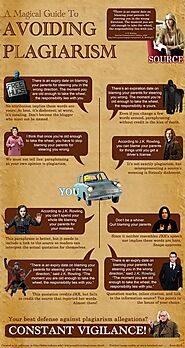
A Magical Guide This infographic was originally created in 2012. However, it stands the test of time and has been reused numerous times. This is a great visual with concrete examples. Follow the path from the original quote by JK Rowling through various versions until it arrives at an ethically acceptable reuse of an idea. There is nothing wrong with sharing other's ideas and quotes! There is so much to be learned from one another and so much that can be shared to enhance each other's lives....we just want to be sure to quote, share, re-mix, and mash-up ethically! Everyone deserves credit for their ideas and their contributions to society.
WHAT: Infographic on avoiding plagiarism
WHY: Make sure you avoid plagiarism as a good digital citizen
HOW: Read infographic from top to bottom
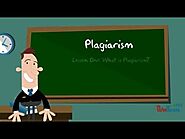
In this video, Professor Andrew Young discusses "What is Plagiarism?" Even though this is geared towards college students, it has great information for you! The definition and example illustrating plagiarism Professor Young uses is actually pretty entertaining. See if you can hear the similarities in the songs. Do you think that situation was fair? The video gets into MLA citations which is a little advanced for middle school, but it is never too early to start thinking about how you will cite your sources in your writing. This video is an excellent introduction to the problem of and the consequences of plagiarism...as well as how to AVOID IT!
WHAT: Entertaining video on plagiarism (Yes...really!)
WHY: Learn why avoiding plagiarism is so critical
HOW: Watch the video
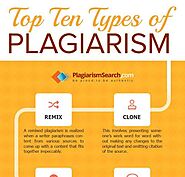
This infographic defines and explains 10 common types of plagiarism. While a plagiarism detector might be able to identify most types of plagiarism, it may not necessarily be able to find all types of plagiarism. That is why it is important for you to be familiar with the various types of plagiarism, so you can double-check your work and make sure all your sources receive credit.
WHAT: Infographic describing most common forms of plagiarism
WHY: Be informed so you can avoid it
HOW: Read infographic and become familiar with the types
